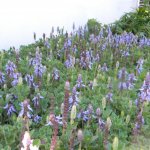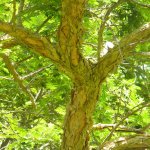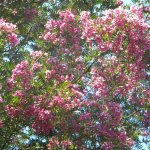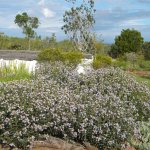Indigenous, Endemic, Exotic, Alien?
Exotic and Alien
Any plant that has been introduced by humans, from outside its natural environmental range.
These terms are synonymous. This would include any plant that does not occur naturally in South Africa. Roses, Agave, Dahlias, Iris, Nasturtiums, Cosmos, Day lilies and a host of others belong in this category.
Although some alien species have invaded the veld to such an extent that they have been declared weeds, most exotic plants have not had this effect and are lovely in their own right. Invariably however, they need more care and watering than indigenous plant species and are less able to survive periodic droughts.
Indigenous
Plants that are native to the area in question.
The "area in question", for our purposes, is the area contained within the borders of South Africa.
This covers widely differing range of natural regions from semi-desert to tropical forest, rolling savanna to coastal cliffs. To make things a bit more confusing, a large proportion of these plants are also found naturally in other countries (usually in Africa), where they are also indigenous to that country.
This is where the definition starts to get a bit fuzzy. The general perception is that if a plant is labeled indigenous, it can be planted anywhere in South Africa with impunity. However, a plant that grows vigorously in the humidity of a Natal tropical forest can hardly be expected to survive the hot, dry berg winds of the Eastern Cape. Such a plant may be considered alien to its new environment: it will need more water and special care to survive. One has to be selective.
Endemic
Endemic species are those species of plants which are found exclusively in a particular geographical area. They are not naturally found anywhere else.
These are indigenous plants that you see growing in the unspoilt areas where you live, but are found only within the confines of South Africa. In the habitats where they are found, they are completely adapted to the vagaries of the weather and water supply, are not deprived of the natural fauna necessary to their well-being and are eminently suited to creation of harmony among the animal, insect and bird life around you.
Where to Now?
Bear in mind the main reasons for planting endemic and indigenous species in the first place: to use less water, to limit the time spent on maintenance and to nurture an ecologically balanced environment.
Consider the more flamboyant, eye-catching varieties, and use them as focal points or to liven up a dull corner. There are many species of what I should imagine could now be called 'alien indigenous' plants, that thrive in Eastern Cape gardens. Barberton daisies and Pride-of-de-kaap from Mpumalanga, Agt-dag-geneesbos from the Western Cape, the Fever tree from the Northern province, and succulents from everywhere have already proven themselves highly adaptable. The generally dark green of our natural shrubbery makes a perfect foil for these carefully chosen "extras".













Add new comment